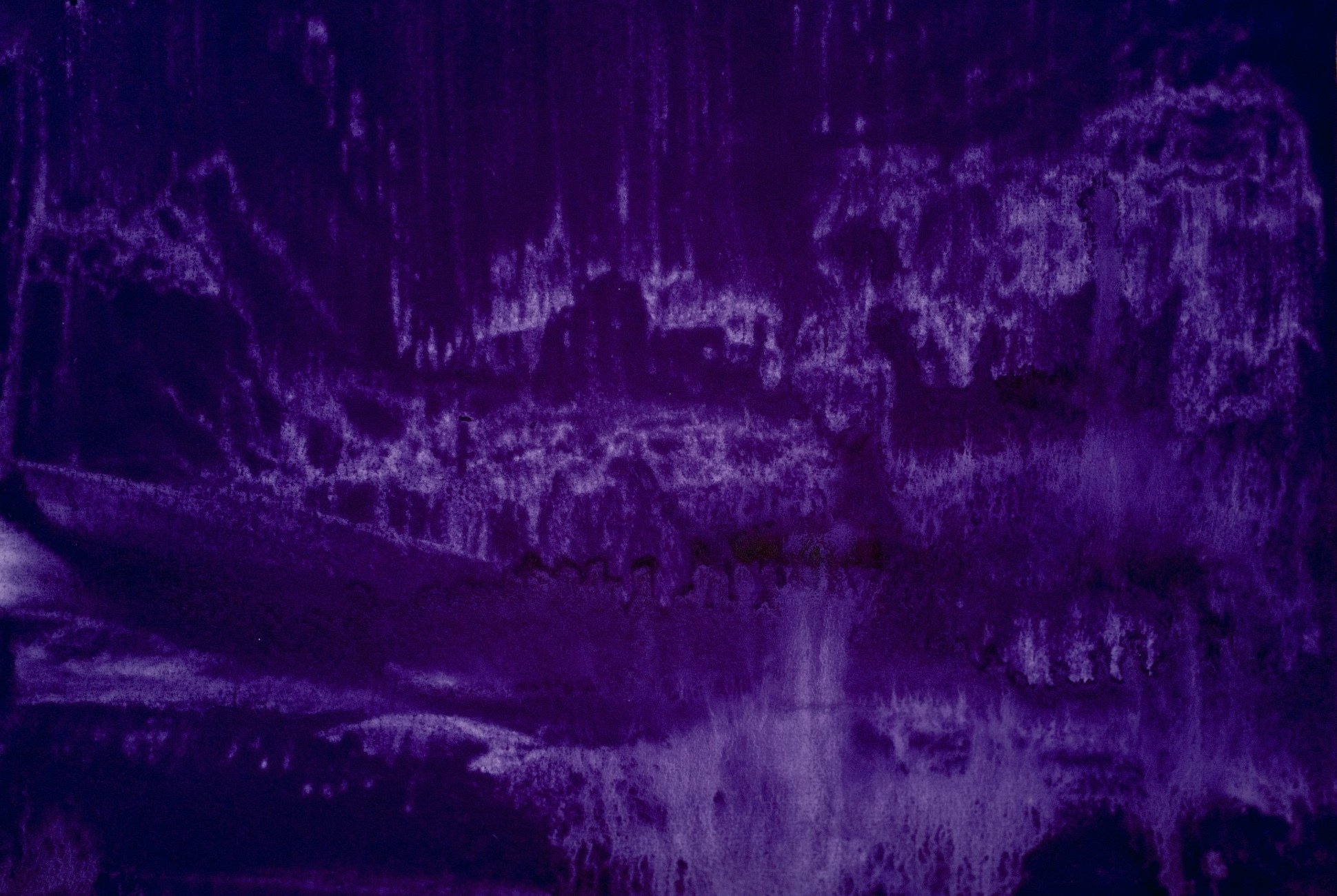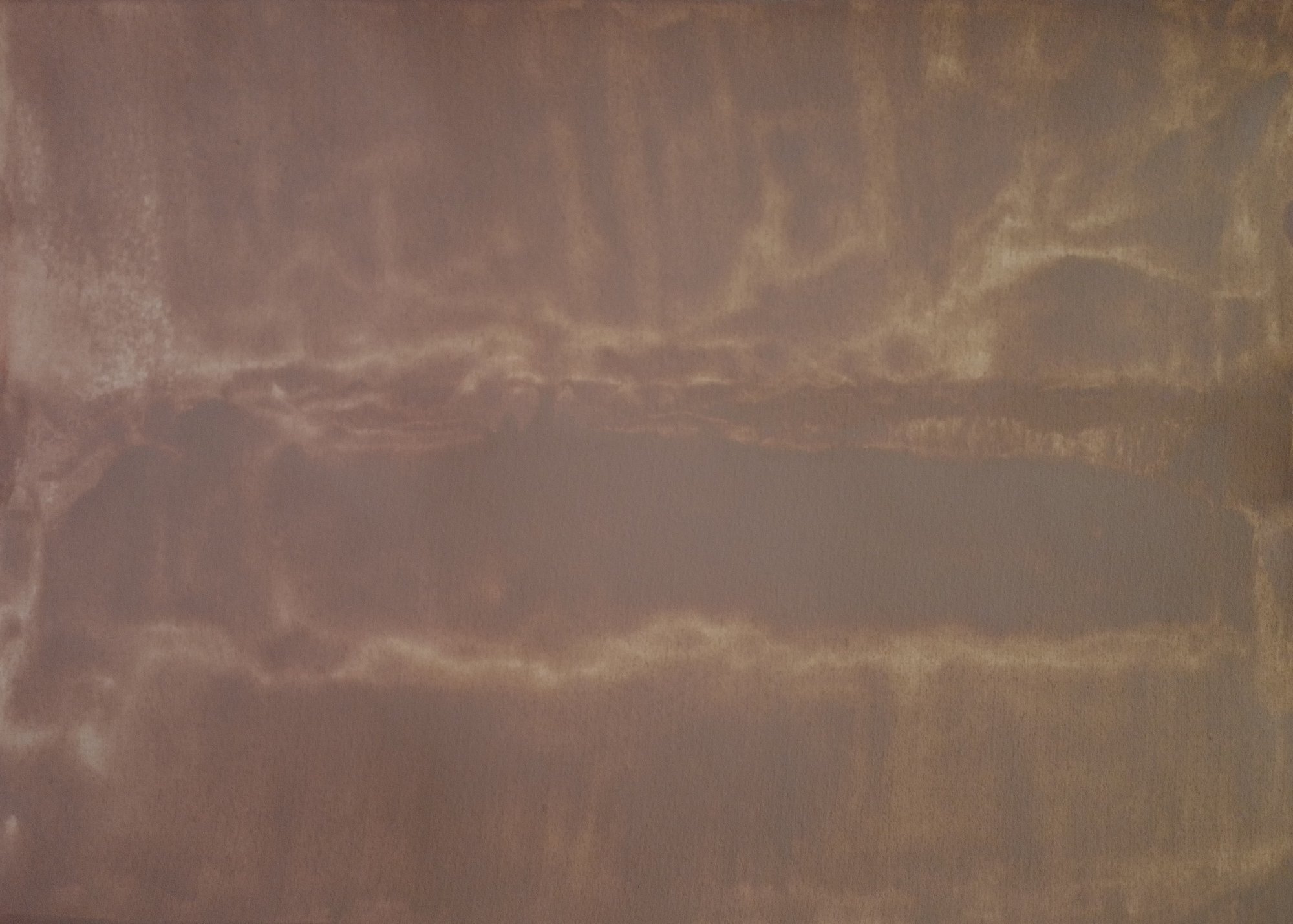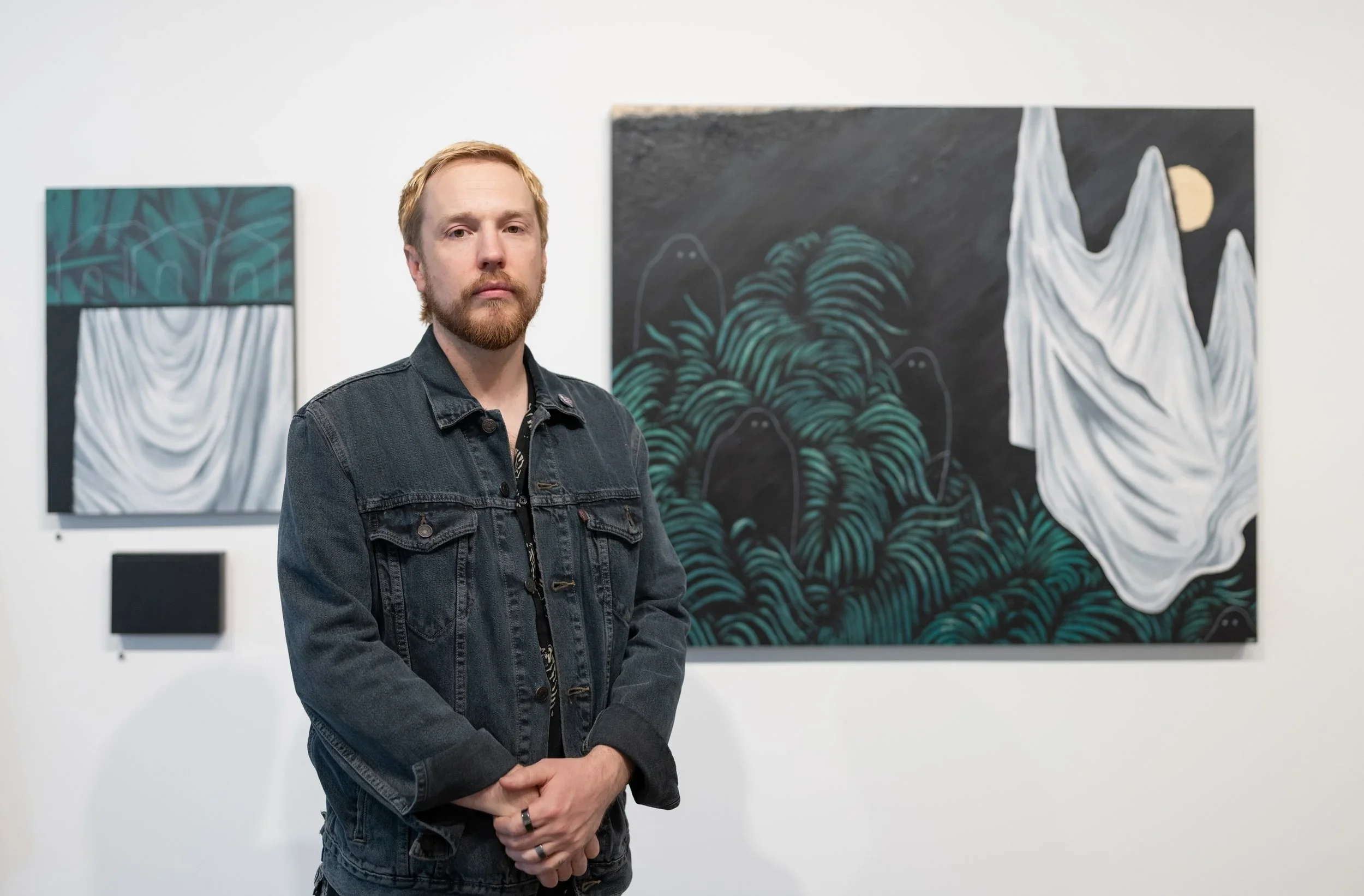10 Questions with Rachel Jag
“Visual art is not a passion for me, it happens out of necessity”
Rachel Jag is a self-taught artist, born in 1985 in Pjatigorsk/ Russia, and moved to Vienna in 1989. The artist is often confronted with the question, “Why did you start to paint?“. That’s hard to answer for someone who has been painting and drawing for longer than she can remember. However, music definitely played a crucial role in Rachel’s need to express herself emotionally in her early years, bringing her back to painting and drawing again and again. At a young age, she started to get involved in various music projects (singing/songwriting), and arrived at visual arts by listening to sounds and melodies that had a big impact on her.
By the age of 6, she had started to take piano lessons and later on, singing lessons, with an opera singer who opened the door to the world of classical music to her. She also sang on stage in a choir for Montserrat Caballé, and was part of many different music and band projects over the years.
Rachel Jag - Portrait
After finishing at the Sigmund Freud High School, Vienna, she went on to study at the “Graphische”, a college for Print, Prepress, and Media Technology, after which she worked as a graphic designer and web developer.
While many printing projects have followed, like screen printing on textiles and prints on paper, the relationship between colour and sound kept bringing her back most strongly to the artistic field of visual arts. Drawn by melodies, the artist transforms fragments of compositions into shape and colour combinations. Also, rhythmic elements are captured with her inner voice leading a marker to be tapped onto the paper. Her works are often fragile and subtle, while also often dramatic and bold.
“My artwork is never about what ‘I’ want to see. More importantly, it is about what is being shown to me and what comes through me. When it’s done, I just put it away. I don’t look for any single ‘interpretation’ or ‘message’, or some sort of translation into words. I prefer to call it a careful ‘approach’ to something undiscovered, or even unknown. I might receive answers on an emotional level, but this could happen after several months, several years, or even never”.
Exploring the approach to the unknown, trying to get closer to the creative process of turning one flash of inspiration in a single moment into something with a life of its own, is the most fascinating to the artist. Intuition leads the way. Every single step in the working process is never premeditated. Having trust and letting the “unknown be shown” is often very challenging. The communication between the artist, the source of her inspiration, and what is being created on paper opens up new, unseen doors and unexplored fields.
Untitled, 2022 © Rachel Jag
INTERVIEW
First of all, introduce yourself to our public. How would you describe yourself as a person and an artist?
Hello everyone, and thank you Altiba9, for giving me the opportunity to be represented by you. My name is Rachel Jag, and I am a self-taught artist based in Vienna. I guess the more I have explored myself as an artist, the more it has shaped me as a person. I have had to learn to overcome shyness by showing my deepest emotions, whether on stage as a performer or through having the experience of exhibiting my work. As a visual artist, I came closer to many different "realities", or perhaps illusions, like timeless immensity, anxiety, connections between human beings, connections to different places, gateways, undiscovered worlds, and much more, some of which are more perceptible through my work, but impossible for me to put into words. I would describe myself as a person for whom expression is not a passion but more a necessity.
What is your artistic background? And when did you first realize you wanted to be an artist?
My artistic journey started at a very early stage of my life. As a child, I always enjoyed drawing, singing, and performing. I have never tried to separate those art forms. To me, they all belong to one another. I had begun piano lessons and dance classes by the age of 6, after which I started taking singing lessons. My teenage years saw me get involved in many bands and other music projects. I have always continued to express myself. I remember when I turned 29, I went through a difficult time, and that's when I started to create visual arts again, helping me transform many things in my life into positives. I wasn't trying to follow a career in this. I was just doing what felt right - but I also felt sure that nothing should interfere with me on this journey.
Hidden City © Rachel Jag
Growing up, you experimented with music before turning to visual arts. How has your music background impacted your current work as an artist?
Music has always led me to either performance or visual arts. There was one moment when this connection had a big impact on me. I was visiting an art exhibition in Vienna, where the artist asked six professional contemporary dancers to move on a huge piece of paper that was rolled out on the floor. Before starting to dance, they had to step into a large bowl of powdered pigment, meaning every movement produced a mark on the paper. I found the whole scene fascinating. The final result on the paper amazed me as well, confirming once again to me that performance, visual art, and music are all interconnected.
Upon hearing fragments of a classical piece of music, I would often visualize shapes and, later on, colours triggered by them. In the other direction, I've also often been inspired by paintings that activate sounds in me just by looking at them. The essence of a short moment, or even a strangely familiar sound, can lead to a very deep artistic process in me. I have tried to evolve the connection between colour and sound, as well as rhythmical elements, by using small spots drawn on paper in time with an inner rhythmic voice. The artwork is finished when I stop feeling the rhythm.
What are the main themes behind your work? What does your art aim to say to the viewers?
It is important for me that my art gets to be shown to the viewer, so that the viewer has their own interaction with the painting. The viewer and the painting build their own atmosphere, which I don't want to interfere with or analyze. The artwork speaks its own language, which I do not try to transpose into words. It is all created in the present moment that we are living in now, and whatever wants to appear on the surface should appear for the sake of creation, whatever level it comes from, whether from the subconscious or not. It is never about what I want to see or what I aim to see; it is more about what is being shown which carries information that touches our senses and gives us a chance to "feel" something. I wish to see something unseen, to feel something unfelt, to "see" a melody that tells a story without words. My work is always a new experience for me, which I hope is for the viewer as well.
How do you create your works? What is your creative process like?
I prepare everything in a very calm atmosphere. I pick every item by intuition right from the start, from the materials to the size of the brush to the choice of colours and so on. I believe that every single detail is part of the vision. For example, the texture of the paper or the amount of water I use - even the opacity of the paint can lead the piece in a different direction. I never know what to expect, and I never remember the process, because I always dive into a kind of trance when I create something. This enables me to switch off my surroundings completely. I try not to talk to anybody, as it is difficult for me to switch between "two realities".
Untitled, 2022 © Rachel Jag
Untitled, 2022 © Rachel Jag
You define your works as "Visions". Can you explain to our readers what you mean by that?
As I question my artwork, I have no choice but to believe that the visible information is a reflection of something, coming from somewhere, aiming to express something. This is why I call them visions. They exist with their own realities, telling their own "weird" stories with no beginning and no end. No interpretation. You are left with emotion.
You also mention water as an important element in your art. Could you tell us more about it and how it influences your work?
I feel that water brings a 3-dimensional element to my artwork. It forces me to stay focused the whole time during the creative process, as one drop of water can change the whole painting, which is not a negative thing, but very important to be aware of. As I am conscious of the fact that it helps to connect with the inner layers of myself, I use it very carefully because it is a very powerful and very unpredictable element to me. For my drawings, I also like to use water-soluble oil paints or water-markers.
Is there any other theme or technique you would like to experiment with?
I love it when art and science overlap. For example, turning my drawings into sculptures using a 3D printer is something that I'm looking into experimenting with.
Untitled, 2022 © Rachel Jag
Untitled, 2022 © Rachel Jag
What do you think of the art community and market? How do you find opportunities to show your works? And what is your relationship with collectors?
I think it is important that an artist feels understood by their community. If this is the case, almost everything else will fall into place by itself. Anything else that tries to block the artist's path in any way, such as attempts to mould them into a certain image, has little to do with art for me. The market is there to help the artist to get the right works to the right buyers, so that each piece finds its rightful home and each buyer is equally satisfied, whether it is the best gallery in the world or an online shop.
I submit my work to various projects and magazines, depending on where I feel my work will make a statement. Often it is a topic area that fascinates me and inspires me to create something intuitively. So far, my feeling has often been right, and I am fortunate enough to have been accepted many times. In recent exhibitions, I was very pleased to see my works being sold in the first week. Solo exhibitions are, of course, also an important way to show my work, of which I have some coming up both at home and abroad.
I know many art collectors, some of them extremely well-established and highly regarded in the art world. I often receive very good advice from them. Others are private collectors who are always happy to add an individual piece of art to their collection, which I think is great as another way to support emerging artists, making their art more visible to a wider audience.
And lastly, what are you working on right now? Anything exciting you would like to tell our readers?
I am currently working on a street-art project with an important message behind it, to make my art visible to everyone and to showcase my style in a larger format.






















